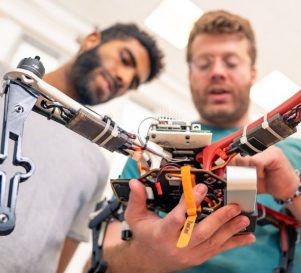Tracking a non-cooperative target is an important challenge in the field of robotics due to the fact that most targets are unknown and unspecified. This is especially true in unfamiliar environments. The use of stereovision allows robots to passively scan large areas and to estimate the relative position, velocity and shape of the objects they recognize. These properties are valuable and can be used to further investigate the scanned objects and determine their structure.
This research is an experimental effort, in which non-cooperative target tracking methods using stereovision measurements were developed and evaluated. The experiments were conducted in the Distributed Space Systems Laboratory at the Technion. The algorithm which was developed in this research with the use of stereovision allows the estimation of the relative position and velocity of the target, while a line-of-sight control algorithm utilizes the measurements and the motion of the target to keep the target within the field of view using real-time processing.










